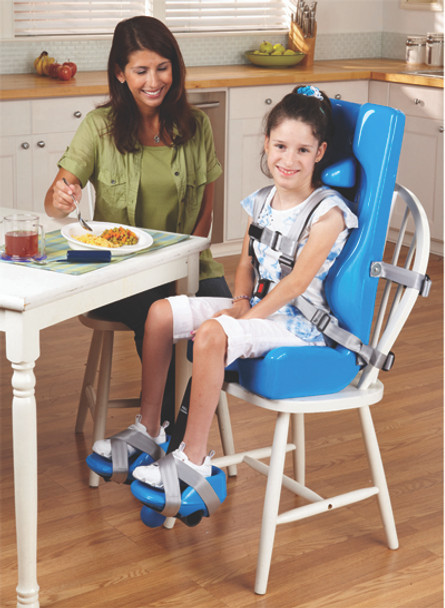What is Pediatric Seating?
For those children with physical disabilities, specialized seating and positioning systems (also known as pediatric seating) are a daily necessity for children and young adults.
The benefits of pediatric seating is that it allows physically challenged children to comfortably and safely enjoy time with family and others when sitting, playing, learning, eating, and bathing.
There are a range of functionality and support that are offered when it comes to pediatric seating systems. Some pediatric seating is designed for specific ages, sizes, and/or the amount of head and body support needed. Then there are some designs that are meant to be adjustable according to varying weights, heights, and the degree of support and positioning that is needed.
Manufactures of pediatric seating (like Tumble Forms) design their seating to grow with your child, meaning that they are designed to be adjustable to give you several years of use. When manufactures designs their pediatric seating they thing about the aesthetics that may be pleasing to children. Such as, bright colors and patterns. They also typically design the seating to be waterproof or at the very least water-resistant.
Pediatric seating give you a range of options and accessories to enhance comfort for children. These options are typically added at additional cost of the base price. These accessories are:
- Types of foot rests.
- Undercut seating (for tight hamstrings).
- Different types of seat belts, seat and back cushions, and foot rests.
- Abduction blocks (to position muscles correctly).
- Fixed vs adjustable lateral head support.
- Types of foot rests.
Types of Pediatric Seating
Other than the seating systems that offer full-body support, there are seating products that help with specific needs. For example, there are seating that is designed for children to integrate more seamlessly into school settings. Like seats designed to fit under school tables so children can sit with peers. We sell seating system like this called First Class School Chairs.
There are also seats designed for being on-the-go that allow for transportation in a safe manner. An example of this is the Trotter Mobility Chair. It is designed with a adjustable seat angle, seat depth, back angle, and sing-away footrest. It also has a 5-point harness with reversible padded strap covers. It folds for easy transportation.
Other seating systems allow for children to comfortably be active as they engage in activities. An example of this is the Tumble Forms Corner Chair with Tray. This specific chair keeps the child's shoulders flexed to help with better focus on fine motor activities. It also helps with maintain leg extension and reduces extensor thrust.
Users of Pediatric Seating?
Any child with a physical disability may benefit from pediatric seating. Typically children with the following disabilities use speak needs seating:
- Cerebral Palsy.
- Scoliosis.
- Muscular Dystrophy.
- Spina Bifida.
Choosing the Best Seating System
This can be daunting, mainly because of the range of factors to be considered, such as:
- Child's height, weight, and age.
- The degree of needed postural and head support.
- What the seating system will be used for (therapy, school, travel).
Also it is important to consider:
- Seat angles, sacral support, and ramped cushioning.
- Types of harnesses for support that may be needed.
- Support and exercise for legs and hips.
Because there is so much to consider, it best to talk with your physical therapist or occupational therapist that works with your child to get their input on what is best for your child when considering pediatric seating.
Recent Posts
-
What to Expect During Hand Therapy: A Guide for Patients and Caregivers
If you’re starting hand therapy—whether after surgery, a stroke, or a neurological …Apr 6th 2025 -
Improve Hand Function and Dexterity with the Neofect Smart Pegboard
The Neofect Smart Pegboard is a revolutionary tool in the field of occupational therapy. I …Mar 25th 2025 -
Overcoming Challenges in Sports Medicine Clinics: Tips for Success
Running a sports medicine clinic presents unique challenges that require a balance of clinical exper …Dec 2nd 2024



